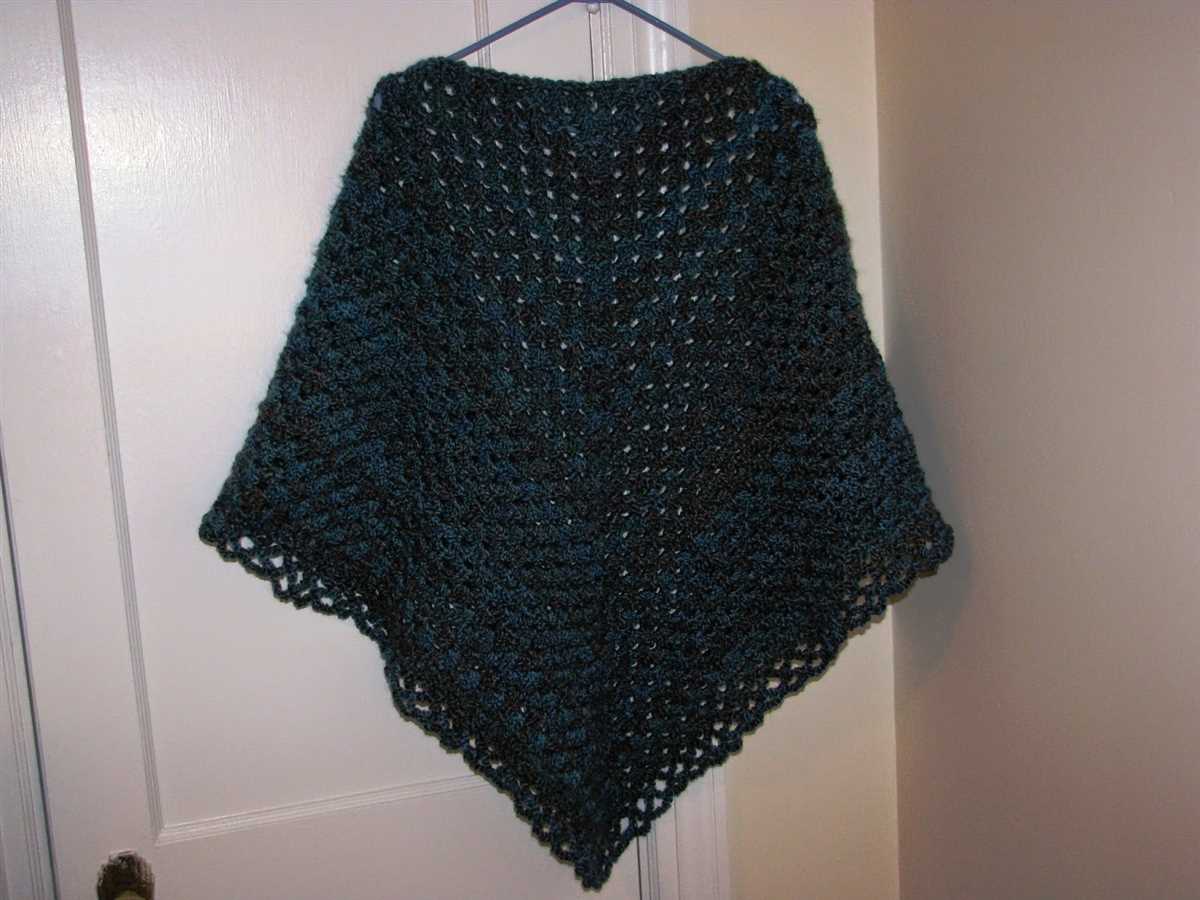
Knitting is not just a hobby–it is a beautiful way to create thoughtful and personal gifts for loved ones. One such gift is a prayer shawl, which is not only a cozy accessory but also a symbol of comfort and support. If you are new to knitting or looking for a simple project, this prayer shawl knitting pattern is perfect for you.
Designed with simplicity in mind, this pattern uses basic stitches and techniques to create a stunning shawl that anyone would appreciate. Whether you are knitting for a friend in need or as a donation to a charitable organization, this shawl will be a reminder of warmth and love.
To begin, gather your materials:
- Size 10 knitting needles
- 2 skeins of soft and warm yarn (approx. 400 yards total)
- Tape measure
- Yarn needle
Once you have your materials ready, cast on 60 stitches to begin your shawl. You will then continue knitting in a simple garter stitch pattern, knitting every row, until your shawl reaches the desired size. Remember to measure your work periodically to check its length.
Simple Prayer Shawl Knitting Pattern
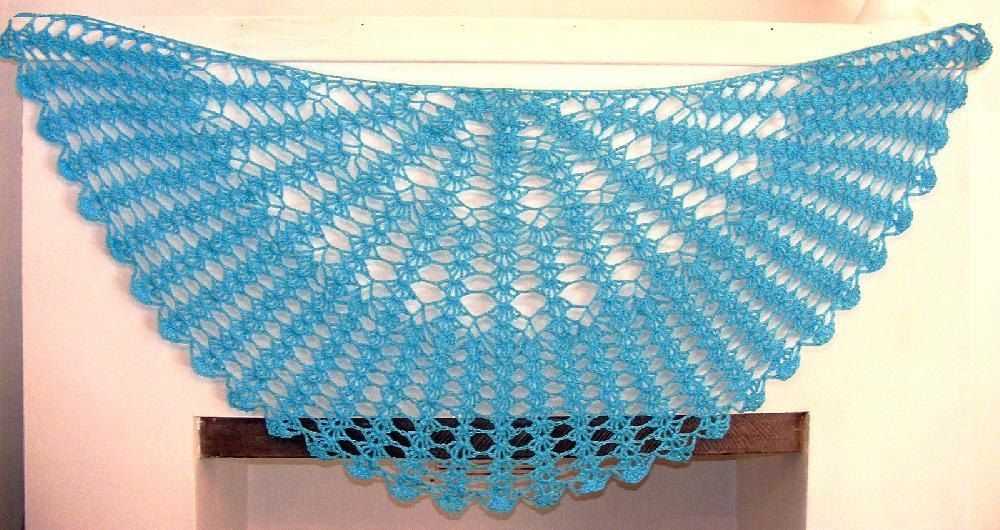
Knitting a prayer shawl can be a meaningful and peaceful project for both beginners and experienced knitters. A prayer shawl is a thoughtful gift that can provide comfort and solace to someone in need. By following this simple knitting pattern, you can create a beautiful and heartfelt prayer shawl.
Materials Needed:
- Size 10 knitting needles
- 3 skeins of soft and warm yarn
- Tapestry needle
Instructions:
- Cast on 60 stitches using the long tail cast-on method.
- Row 1: Knit all stitches.
- Row 2: Purl all stitches.
- Repeat rows 1 and 2 until you have reached your desired length. A standard prayer shawl is usually around 60 inches long, but you can adjust the length according to your preference.
- After reaching your desired length, bind off all stitches.
- Weave in any loose ends using a tapestry needle.
Optional Embellishment:
You can add a special touch to your prayer shawl by adding a fringe or a simple lace border. To add a fringe, cut several strands of yarn that are twice the length you want your fringe to be. Fold each strand in half and attach it to the edge of the shawl using a crochet hook or your tapestry needle.
This simple prayer shawl knitting pattern is a wonderful way to create a beautiful and meaningful gift for someone in need. Whether you are making it for a loved one or for a charity project, the comfort and warmth that this shawl provides will surely be appreciated.
Why knit a prayer shawl?
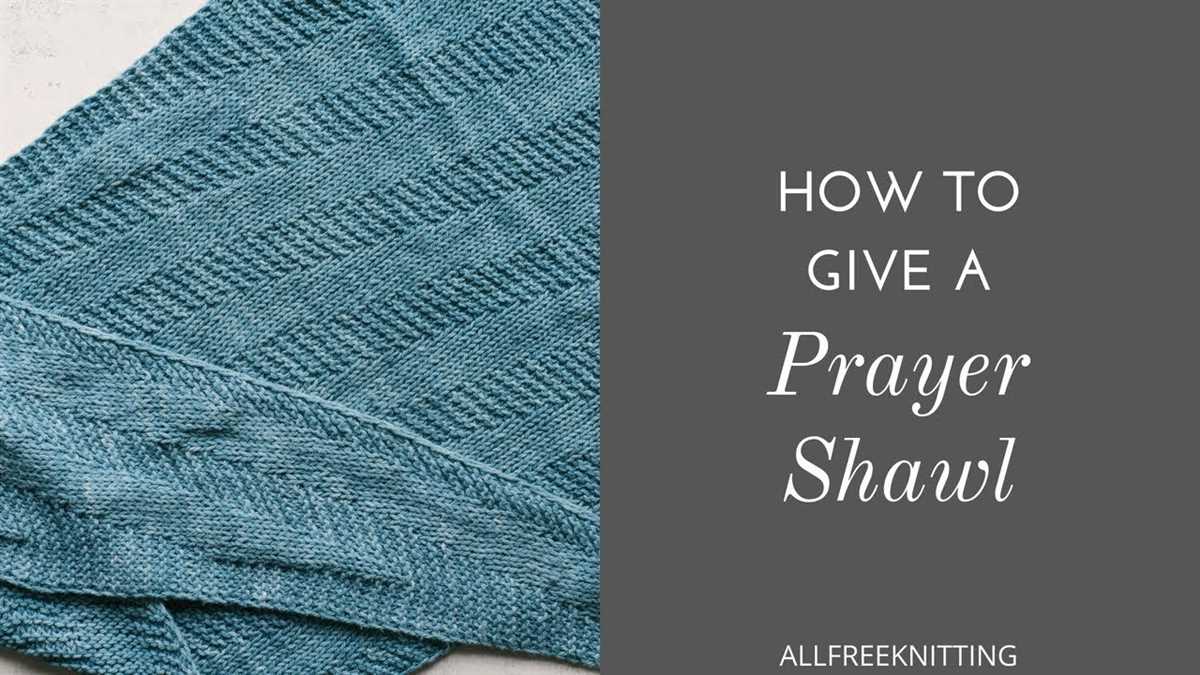
Knitting a prayer shawl is a meaningful and therapeutic activity that can provide comfort and support for both the maker and the recipient. It allows the knitter to express their creativity while also offering a tangible gift of love and warmth.
A prayer shawl is a special kind of shawl that is often made with intention and prayer. It is typically given to someone going through a difficult time or in need of healing. The act of knitting a prayer shawl can be seen as a form of meditation, allowing the knitter to focus their thoughts and prayers on the person who will receive the shawl.
When knitting a prayer shawl, one can choose to include specific prayers or blessings within the stitches, making each shawl unique and personalized. This adds an additional layer of meaning and intention to the shawl, making it a truly special gift.
Aside from the spiritual and emotional benefits, knitting a prayer shawl can also be a practical endeavor. The shawls are typically made from soft, warm yarns that provide comfort and coziness. They can be easily customized to fit the preferences and needs of the recipient, whether they prefer a lightweight shawl or something more substantial.
In addition, the act of knitting itself can be therapeutic and calming. It provides a sense of accomplishment and can help reduce stress and anxiety. Knitting a prayer shawl allows the knitter to dedicate their time and energy into creating something meaningful and beautiful.
Overall, knitting a prayer shawl is a powerful and fulfilling experience that combines creativity, spirituality, and practicality. It serves as a reminder of the power of love, prayer, and human connection.
Choosing the right yarn and needles
When it comes to knitting a prayer shawl, choosing the right yarn and needles is essential. The right combination can make all the difference in ensuring that the finished shawl is not only beautiful, but also functional and comforting.
Yarn selection: One of the key factors to consider when selecting yarn for a prayer shawl is its softness and warmth. Look for yarn that is gentle on the skin and provides a cozy feel. Many knitters prefer using natural fibers like wool or alpaca for their prayer shawls, as they provide excellent insulation and are naturally breathable. Cotton can also be a good choice, especially for warmer climates or for those with sensitivity to wool.
Needle size: The needle size you choose will depend on the yarn weight you have selected for your project. Thicker yarns will require larger needles, while thinner yarns will require smaller needles. It’s important to take into consideration your personal knitting tension and gauge when selecting the appropriate needle size. Keep in mind that the needle size will also affect the drape and dexterity of the finished prayer shawl.
Additionally, when knitting a prayer shawl, it’s important to keep the recipient’s preferences and needs in mind. Some may prefer a lighter, more delicate shawl, while others may prefer a thicker, warmer one. Discussing these preferences with the recipient or their loved ones can help guide your yarn and needle selection.
Getting started: casting on
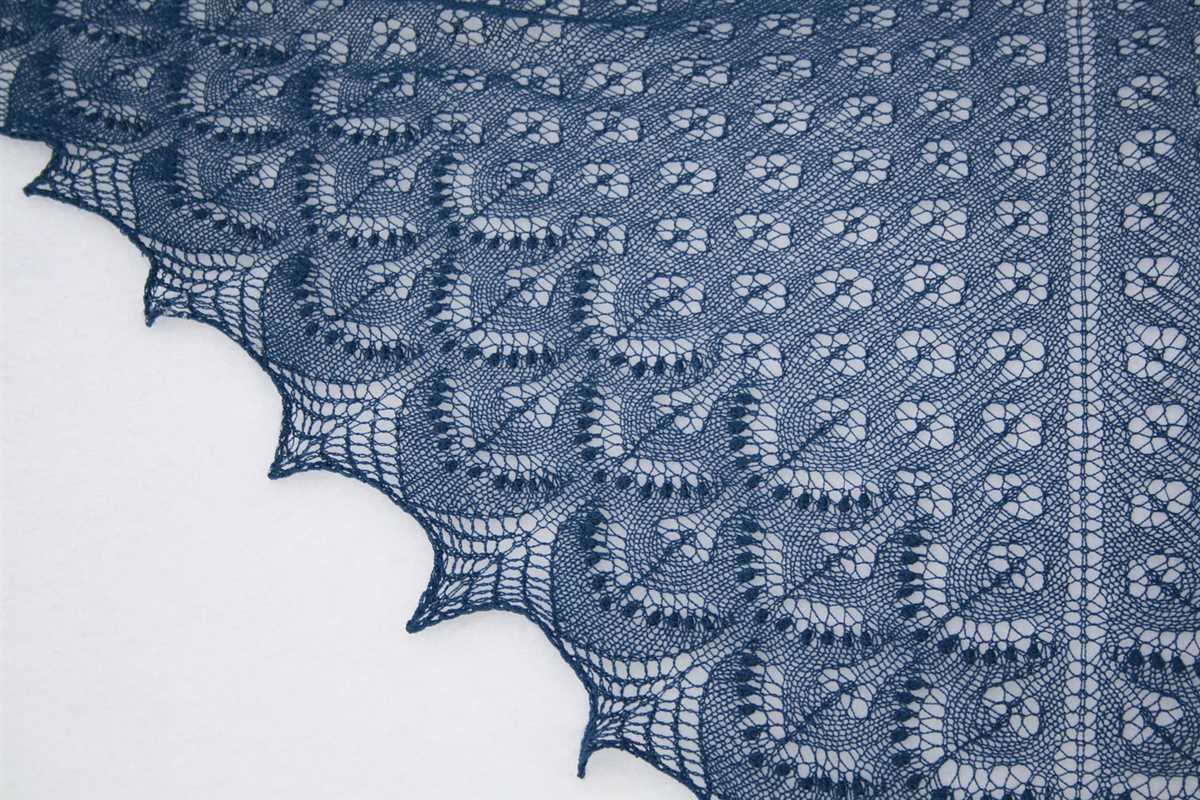
Before you start knitting the prayer shawl, you will need to cast on your stitches. Casting on is the process of creating the loops on your knitting needle that will become the first row of your project. There are several methods you can use to cast on, but the most commonly used method for this prayer shawl pattern is the long-tail cast on.
To begin, you will need to estimate the length of yarn you will need for your cast on. A good rule of thumb is to measure a length about three times the width of your finished prayer shawl. Make a slip knot at this point and place it on one of your knitting needles. Hold the needle with the slip knot in your right hand and the other needle in your left hand.
Long-tail cast on method:
- Using the slip knot as your first stitch, hold the two needles in an X shape, with the slip knot on the bottom needle and the working yarn in your right hand.
- With your right thumb and forefinger, reach through the bottom of the X and grab the working yarn, bringing it over the bottom needle and up to the top needle.
- Now, with your left thumb and forefinger, reach through the top of the X and grab the tail of the yarn, bringing it over the top needle and behind the bottom needle.
- Drop the bottom needle and pull the tail and working yarn to tighten the stitch. Repeat steps 2-4 until you have cast on the desired number of stitches for your prayer shawl.
Once you have finished casting on, you are ready to begin knitting the first row of your prayer shawl. Keep in mind that the number of stitches you cast on will determine the width of your shawl, so be sure to cast on the correct number of stitches specified in the pattern instructions.
Knitting the main body of the shawl
Once you have cast on the desired number of stitches, it’s time to start knitting the main body of the shawl. This pattern uses a simple garter stitch, which means that every row is knitted.
To begin, knit the first row. Then, continue knitting every row until the shawl reaches the desired length. Keep in mind that the length of the shawl will depend on your personal preference and the amount of yarn you have available.
If you would like to add some variation to the pattern, you can incorporate different knitting stitches or patterns, such as lace or cables, into the main body. This will add some texture and interest to the finished shawl.
As you knit, make sure to regularly check your stitch count to ensure that you are maintaining the correct number of stitches. If you accidentally drop a stitch or make a mistake, you can use a crochet hook or knitting needle to fix it by picking up the dropped stitch or un-knitting the row.
Continue knitting the main body of the shawl until you are satisfied with its length. Once you have reached the desired length, you can move on to finishing the shawl by binding off the stitches and adding any desired embellishments.
Add a touch of lace
If you want to add an elegant and delicate touch to your prayer shawl, incorporating lace patterns is the perfect way to do it. Lace knitting involves creating intricate patterns with deliberate holes and eyelets, resulting in a lightweight and airy fabric that drapes beautifully.
One popular lace pattern that you can use is the feather and fan stitch. This stitch creates a wave-like pattern that adds movement and visual interest to your shawl. It is relatively easy to knit, with a simple repeat of knit and purl stitches. You can incorporate the feather and fan stitch into the border of your prayer shawl or use it as an all-over lace pattern.
Another option is the diamond lace stitch. This stitch creates diamond-shaped motifs that are perfect for adding an elegant touch to your shawl. The diamond lace stitch consists of a combination of yarn overs, decreases, and knit stitches that create the intricate diamond pattern. This stitch works well as a focal point in the center of your shawl or as an edging.
Consider using a lace weight yarn for your prayer shawl. Lace weight yarn is typically very thin, which allows you to create intricate lace patterns with small details. For an extra touch of luxury, you can use a lace weight yarn with a silk or cashmere blend. These fibers add a softness and drape to your shawl, making it even more special.
When incorporating lace into your prayer shawl, consider the recipient’s preferences and the purpose of the shawl. A simple and subtle touch of lace may be more suitable for someone who prefers understated elegance, while a more intricate lace pattern can add drama and flair.
- Experiment with different lace patterns to find the one that speaks to you, and don’t be afraid to try something new.
- Remember to use stitch markers to keep track of your lace repeats and to block your finished shawl to enhance the lace pattern’s beauty.
- Whether you choose a feather and fan stitch or a diamond lace stitch, adding a touch of lace to your prayer shawl will elevate it to a whole new level of beauty and sophistication.
Creating the border
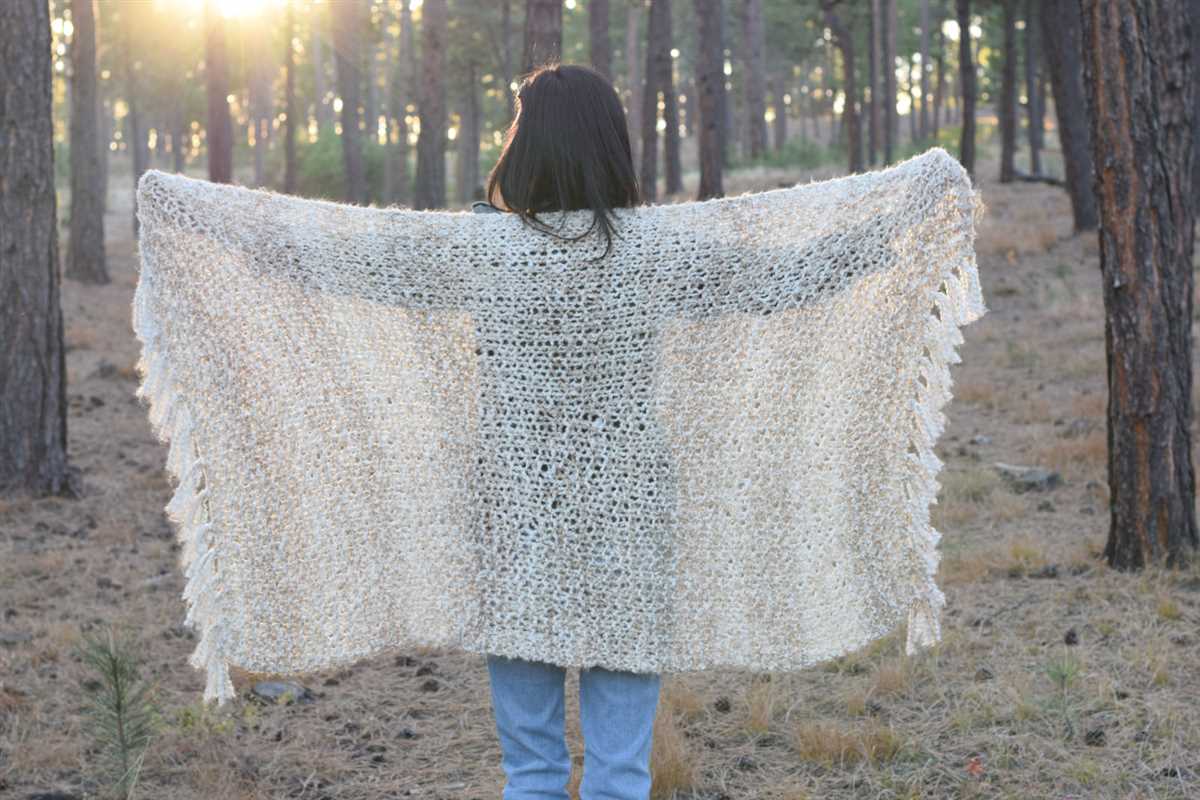
Once you have finished knitting the main body of your prayer shawl, it’s time to add a border. The border adds a beautiful finishing touch to your shawl and helps to give it a more polished and complete look.
To start the border, you can use a simple garter stitch or ribbed stitch pattern to create a neat and decorative edge. You can also choose to add a lace or cable pattern for a more intricate and delicate border design. Whichever pattern you decide to use, make sure it complements the overall style of your shawl.
Garter stitch border pattern:
The garter stitch border is one of the simplest and most popular choices for a prayer shawl. It creates a neat and textured border that adds a touch of elegance to the shawl. To create the garter stitch border, simply knit every row for the desired number of rows. You can choose to knit the border in a contrasting color or use the same color as the main body of the shawl for a more cohesive look.
Ribbed stitch border pattern:
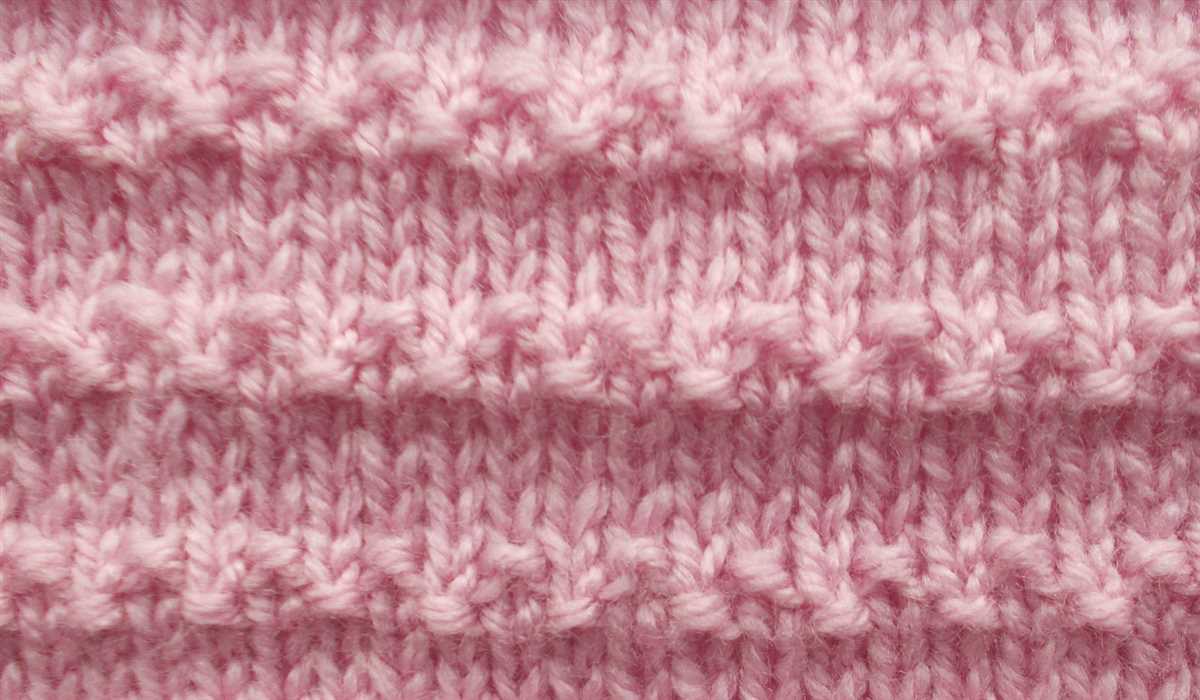
The ribbed stitch border is another popular choice for a prayer shawl. It adds a nice stretch and texture to the edge of the shawl. To create the ribbed stitch border, you can use a combination of knits and purls in a specific pattern. For example, you can knit 2 stitches, purl 2 stitches, and repeat this pattern until the end of the row. Then, on the next row, you would purl 2 stitches, knit 2 stitches, and repeat this pattern. You can continue this pattern for the desired number of rows to create a ribbed border.
Once you have finished knitting the border, it’s important to bind off the stitches to secure them. You can use a regular bind-off method or choose a stretchy bind-off if you want a more flexible edge. After binding off, make sure to weave in any loose ends and block your shawl to give it a nice and even shape.
Adding special stitches or patterns
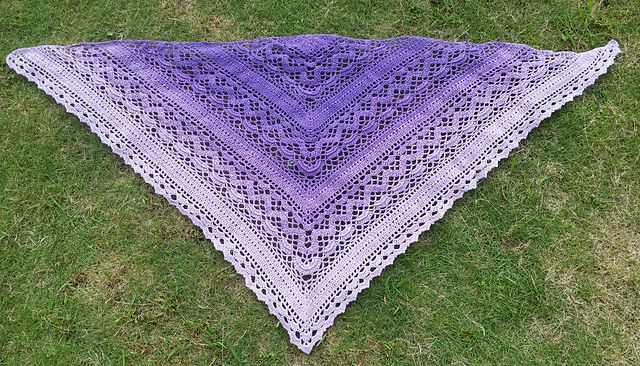
One way to make a simple prayer shawl more unique and personal is by incorporating special stitches or patterns. These additional elements can add texture, visual interest, and symbolism to the shawl.
1. Lace stitches: Lace stitches are delicate and intricate patterns that create openwork designs. They can be used to add elegance and femininity to a prayer shawl. Some popular lace stitch patterns include the feather and fan stitch, the diamond lace stitch, and the leaf motif lace stitch.
2. Cable stitches: Cable stitches create raised, interlocking patterns that resemble braids or ropes. They can add a sense of strength and unity to a prayer shawl. Cable stitch patterns can range from simple twists to more complex designs like the honeycomb cable or the horseshoe cable.
3. Colorwork: Adding colorwork to a prayer shawl can make it visually striking and meaningful. This can be done through techniques like stranded knitting, where multiple colors are used in a single row, or intarsia, where separate blocks of color are knit into the fabric. Colorwork can be used to create patterns, symbols, or even personalized messages within the shawl.
4. Embroidery: Embroidery can be used to add intricate designs, motifs, or messages to a prayer shawl. Embroidery stitches such as satin stitch, backstitch, or French knots can be used to create beautiful embellishments. This allows the knitter to customize the shawl with meaningful symbols or personal touches.
By incorporating special stitches or patterns into a simple prayer shawl, knitters can make their creations more unique, personal, and meaningful to themselves or the recipients. Whether it’s lace, cables, colorwork, or embroidery, these extra touches can transform a basic shawl into a cherished item with added significance.
Personalization with Embellishments
In addition to the basic knitting pattern for a prayer shawl, you can add personalization and make it truly unique by incorporating embellishments. These embellishments can be in the form of buttons, beads, ribbons, or embroidery.
One way to personalize your prayer shawl is by adding buttons along the edge or at the corners. You can choose buttons in different colors or shapes that have a special meaning to you or the person you intend to gift the shawl to. Sewing the buttons on can add a decorative touch and also create a functional closure for the shawl.
Another way to embellish your prayer shawl is by using beads. You can either knit the beads directly into your work or sew them on afterwards. The beads can be placed sporadically for a subtle effect or in a specific pattern to create a design. Beads can add a touch of elegance and sparkle to your shawl, making it even more special.
Ribbons can also be a beautiful addition to a prayer shawl. You can weave them through the stitches or attach them at the ends. Ribbons can be used to create bows, tie closures, or simply add a pop of color and texture to the shawl.
If you are skilled in embroidery, you can use this technique to personalize your prayer shawl. Whether it’s adding initials, a meaningful symbol, or a beautiful design, embroidery can transform your shawl into a one-of-a-kind piece. You can use contrasting or complementary colors of thread to make your embroidery stand out.
Remember that the goal of personalizing your prayer shawl with embellishments is to make it meaningful and reflective of your own style and the intended recipient. Have fun experimenting with different ideas and techniques to create a shawl that is truly special.
Blocking your prayer shawl
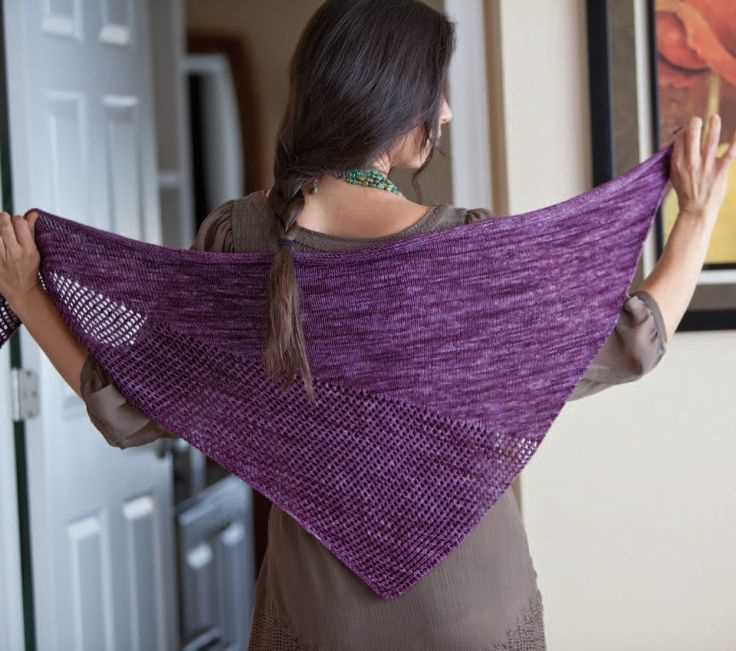
Blocking is a crucial step in finishing your prayer shawl. It helps to shape and define the stitches, smooth out any wrinkles, and give your shawl a professional and polished look. There are several methods you can use to block your shawl, depending on the fiber content and your preferences. Here are a few options to consider:
Wet blocking:
Wet blocking is a common method used for blocking shawls made from natural fibers like wool, cotton, or silk. To wet block your shawl, you will need to soak it in lukewarm water with a gentle detergent for about 15-20 minutes. Gently squeeze out the excess water, taking care not to wring or twist the fabric. Lay the shawl flat on a clean towel and shape it to the desired dimensions. Pin the edges or use blocking wires to hold the shape in place. Let it dry completely before removing the pins or wires.
Steam blocking:
If your shawl is made from synthetic fibers or if you prefer not to wet block, you can use steam blocking instead. Set up an ironing board or a blocking mat, place a clean cloth over the shawl, and hover the steam iron about 1-2 inches above the fabric. Gently steam the shawl, moving the iron back and forth, until the fibers relax and the stitches even out. Be careful not to touch the fabric or apply too much pressure, as it may cause damage. Allow the shawl to cool and dry completely before removing the cloth or pins.
- Pin blocking: Pin blocking is particularly useful if you want to achieve a specific shape or design with your shawl. Use rust-proof T-pins or blocking wires to secure the shawl to a blocking board or a foam pad. Stretch and shape the shawl to the desired size and dimensions, inserting pins at regular intervals along the edges or in specific pattern areas. Leave the shawl to dry completely before removing the pins.
- Combination blocking: Sometimes, a combination of wet and steam blocking may be necessary, especially if your shawl has multiple fiber contents or intricate stitch patterns. You can wet block the natural fiber sections and steam block the synthetic parts or delicate stitches. Adjust your blocking method accordingly to suit the needs of your shawl.
Remember, blocking is an important step that can significantly enhance the look of your prayer shawl. It allows the stitches to relax and settle, giving your shawl a professional and finished appearance. Take your time, follow the instructions for your specific fiber content, and enjoy the process of transforming your shawl into a beautiful and comforting prayer piece.
Prayer Shawl Care and Maintenance
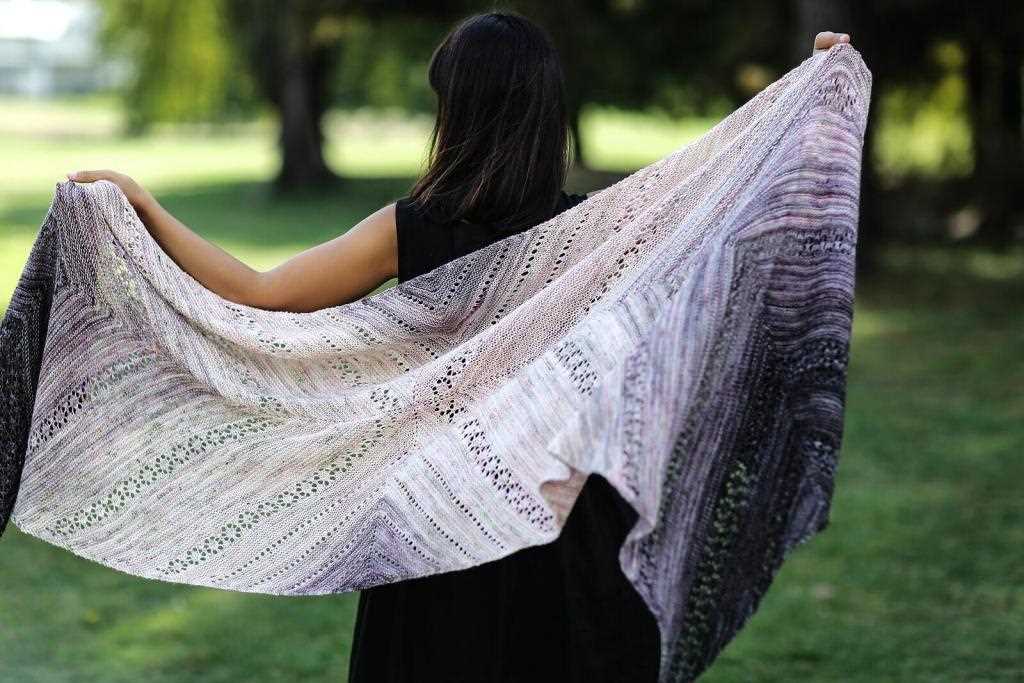
Proper care and maintenance of your prayer shawl is important to ensure its longevity and keep it looking its best. Here are some tips to help you care for your shawl:
1. Washing the Shawl
It is recommended to hand wash your prayer shawl to avoid any potential damage. Use lukewarm water and a mild detergent specifically designed for delicate fabrics. Gently swish the shawl in the water and avoid scrubbing or wringing it. Rinse the shawl thoroughly to remove any detergent residue.
2. Drying the Shawl
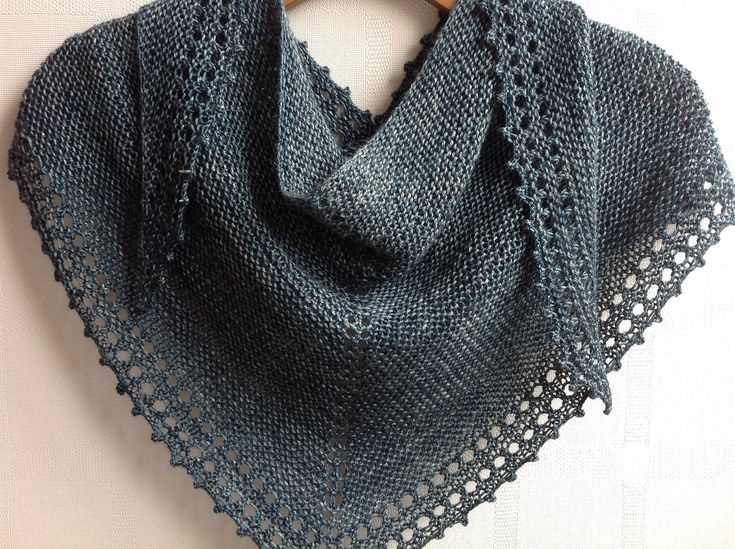
To dry the shawl, lay it flat on a clean towel or a drying rack. Gently reshape the shawl to its original dimensions and smooth out any wrinkles. Avoid hanging or stretching the shawl, as this can distort its shape. Allow the shawl to air dry completely before storing or wearing it.
3. Storing the Shawl
When not in use, it is best to store your prayer shawl in a clean and dry place. Fold it neatly and lay it flat to avoid any creasing or wrinkling. You can also use acid-free tissue paper to protect the shawl from any potential moisture or dust. Avoid storing the shawl in direct sunlight, as this can cause fading.
4. Handling and Wearing the Shawl
When handling or wearing your prayer shawl, it is important to be gentle and mindful of any jewelry or sharp objects that can snag the delicate fabric. Take care not to pull or tug on the shawl, as this can lead to fraying or tearing. If you notice any loose threads or damage, mend them promptly to prevent further deterioration.
By following these care and maintenance tips, you can ensure that your prayer shawl remains in good condition and continues to provide comfort and solace for years to come.
Sharing your prayer shawl
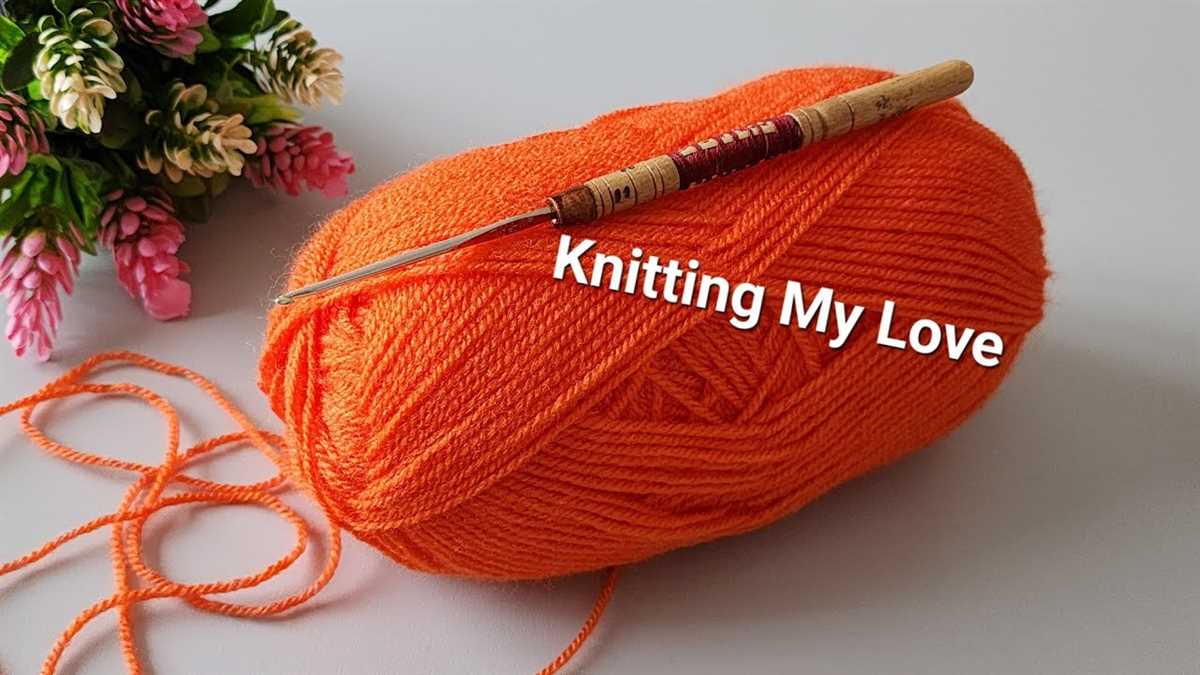
Once you have completed knitting your prayer shawl, you may feel a sense of joy and accomplishment. But the real beauty of a prayer shawl lies in its ability to provide comfort and support to others. By sharing your prayer shawl with someone in need, you can make a positive impact on their life.
Choosing the right recipient: Before sharing your prayer shawl, take some time to think about who would benefit from it the most. It could be someone going through a difficult time, dealing with illness, or in need of spiritual support. Trust your intuition and choose someone whom you feel a connection with.
Accompanying your gift: When giving your prayer shawl, consider including a heartfelt note or a simple prayer. This will add a personal touch to your gift and let the recipient know that they are in your thoughts and prayers. You can also provide resources or suggestions for using the shawl, such as meditation or prayer practices.
Receiving feedback: After you have shared your prayer shawl, it can be meaningful to hear back from the recipient. They may feel grateful for your kind gesture and offer their thanks. Hearing how the prayer shawl has made a positive impact on their life can be incredibly fulfilling and may even encourage you to continue knitting more shawls to share.
Spreading the love: As word spreads about your prayer shawls, you may find that more people in your community express interest in receiving one. Consider starting a prayer shawl ministry or group, where you can gather with others to make shawls and distribute them to those in need. This can create a sense of community and make your impact even greater.
| Sharing your prayer shawl: | Tips: |
|---|---|
|
|
|
|
|
|
Inspiration from Prayer Shawl Testimonials
Over the years, many individuals and groups have found comfort and solace in creating and gifting prayer shawls. Here are a few inspiring testimonials from people who have experienced the power of prayer shawls:
-
Patricia: “When I was going through a difficult time in my life, a friend gave me a prayer shawl. It was a simple act of kindness, but it meant the world to me. The shawl provided a tangible reminder that I was not alone and that people were praying for me. It gave me strength and peace during those challenging days.”
-
Emily: “I started knitting prayer shawls with a group of women from my church, and it has been such a meaningful experience. We gather every week, share stories, and knit together. It has not only deepened my spiritual practice but also brought me closer to these amazing women. Through our shawls, we are able to spread love and support to those in need.”
-
David: “I received a prayer shawl when I was diagnosed with cancer, and it became a constant companion during my treatments. Whenever I wrapped myself in the shawl, I felt a sense of comfort and warmth. It reminded me of the power of prayer and the love and support of my friends and family. I now make it a point to create prayer shawls and gift them to others who are going through difficult times.”
These testimonials serve as a reminder of the impact a simple prayer shawl can have on someone’s life. Whether you are knitting a shawl for yourself or for someone else, know that your creation has the potential to provide comfort, healing, and hope.
So, pick up your knitting needles and start creating a beautiful prayer shawl. Share the love and support with someone who needs it most!